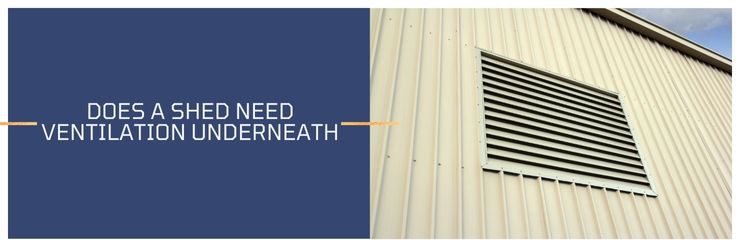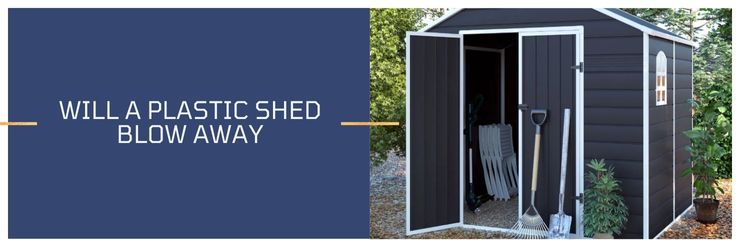How many vents should a shed have? it’s an important question when planning to build a shed with permission. When you’re deciding how to vent your shed, it’s important to think about what type of climate you live in and the materials you’ll be using to build your shed.
In general, sheds need at least one window and one vent, but additional vents may be necessary depending on your climate and the size of your shed.
If you live in a hot, climate, additional vents will help to keep your shed cooler. If you’re using materials that are sensitive to moisture, like wood, you’ll need to make sure your shed has enough vents to allow the air to circulate and prevent the build-up of moisture.
Read on for more tips on your shed!
How Many Vents Should a Shed Have
It is generally recommended that sheds have at least one vent to allow for air circulation. This helps to prevent the build-up of moisture and prevents the growth of mold and mildew.
However, in some cases, two vents may be necessary. This is typically the case for larger sheds, or sheds that will be used for storing power equipment or chemicals.
When in doubt, it is always best to consult with a shed builder or retailer to determine how many vents your shed should have.
By taking this simple step, you can help to ensure that your shed will remain dry and comfortable for years to come.
Related Article:
How Much Venting Does a Shed Need
When it comes to vents, more isn’t always better. In fact, if you have too much exhaust venting, you can actually end up causing problems like pulling snow and rain into your shed.
The National Building Code requires 1 square foot of venting per 300 square feet of attic/floor space with a vapor barrier, and 1 square foot per 150 square feet without a vapor barrier.

So, if you’re not sure how much venting your shed needs, a good rule of thumb is to take the square footage of the floor (or attic, if it has one) and divide it by 2. That will give you the square inches needed for venting.
For example, a 200 sq. ft. shed divided by 2 is 100” sq. of intake and 100” sq. of exhaust. This will give you a good starting point for making sure your shed is properly ventilated.
Remember, the square footage of your shed is calculated by multiplying the length by the width.
What are the Benefits of Putting Vents in a Shed
Vents are one of those things that you don’t necessarily think about when it comes to your shed, but they can actually be quite beneficial.
For one thing, vents help to circulate air and prevent the build-up of condensation, which can lead to mold and mildew.
Additionally, vents can help to keep the shed cooler in summer and warmer in winter, which can prolong the life of your stored belongings.
And finally, vents can deter pests from making themselves at home in your shed. So next time you’re considering adding a vent to your shed, remember that there are more benefits than just improved airflow.
Should I Put Vents in My Shed
If you are planning to use your shed as a workspace, then vents are probably a good idea. However, if you are only using them for storage, then you may be able to get by without them.
When most people think of a shed, they picture a small, dark, and cramped space that is used for storing gardening tools or other outdoor equipment.
However, sheds can be so much more than that. With a little bit of planning, they can be turned into comfortable and functional places to work on hobbies or simply relax.
One important factor to consider when planning a shed is ventilation. Vents help to circulate air and reduce the risk of condensation and mold growth.
In addition, they can also help to keep the shed cooler in the summer and warmer in the winter. As a result, vents are an important consideration for any shed owner.
When deciding whether or not to install vents in a shed, it is important to weigh the pros and cons. On one hand, vents can help improve the comfort level of the shed.
On the other hand, they can also let in pests and rodents. Ultimately, the decision of whether or not to put vents in a shed is up to the individual shed owner.
Where Should Vents Be Placed in a Shed
When it comes to sheds, ventilation is important but often overlooked.
Proper ventilation in a shed helps to prevent condensation and mold growth, both of which can cause serious damage to shed walls and contents.
Vents should be placed high on the shed walls, near the roofline. This will allow hot air to rise and escape through the vents, while cooler air is pulled in through lower openings.
For best results, install a vent near each corner of the shed, and consider adding additional vents along the ridge line for even more airflow.
By taking a few simple steps to ensure adequate ventilation, you can help extend your shed’s life and protect your belongings from the elements.
Conclusion
Many people may not realize that having a vent in their shed is important. Not only does this help with air circulation, but it also helps to prevent the build-up of moisture.
This can lead to the growth of mold and mildew, which can be harmful to your health. But how many vents should a shed have? It is generally recommended that sheds have at least one vent.
If you are unable to install a vent, make sure that you open the door regularly to allow for air circulation.
If you are in need of a new shed or are looking to replace your old one, make sure that you choose one with a vent. It will be worth it in the long run!






